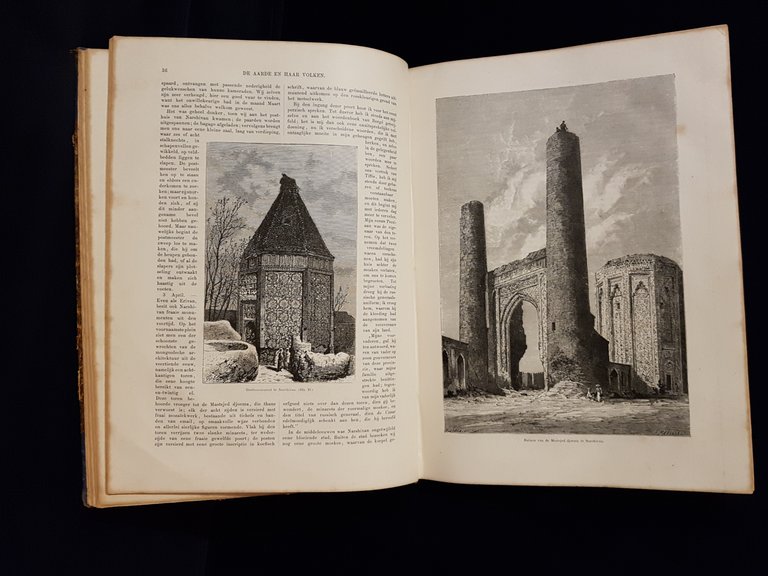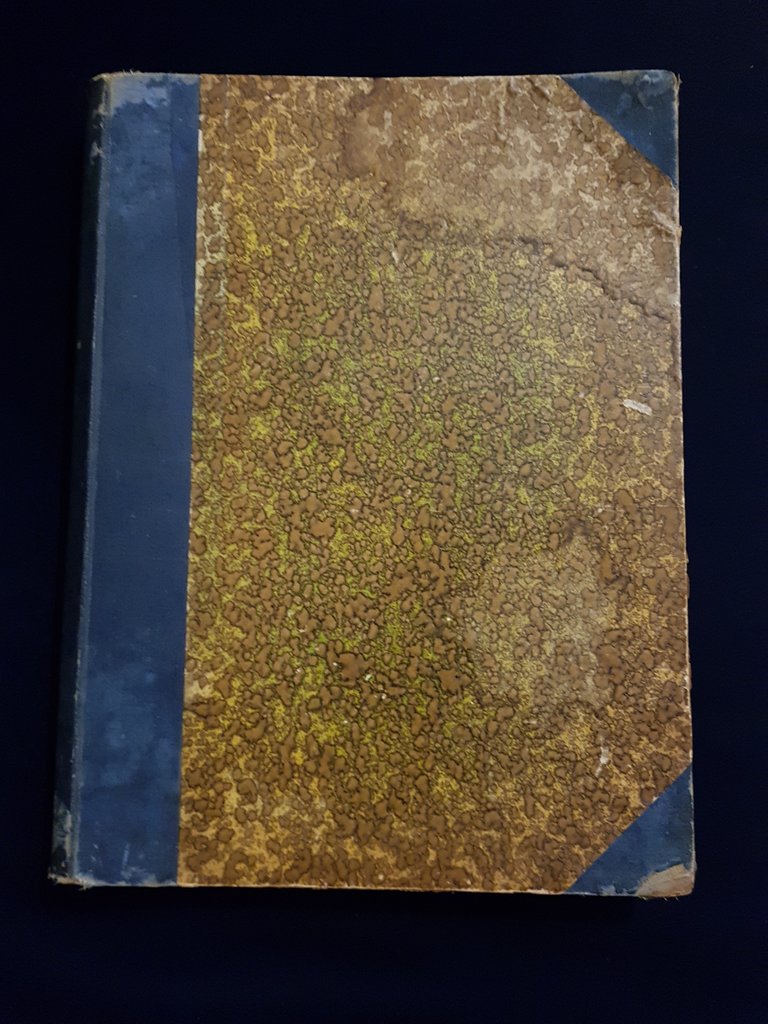I'm asking people about the oldest thing they own in the Ask the Hive group, but my own answer is long enough to create a separate post.
The oldest thing I own is a book from 1885. It's actually a binding of one year from a magazine called De Aarde en haar Volken (The Earth and its Peoples). This is like the Dutch version of the National Geographic, but older - it started in 1865. Description in Dutch. It's refreshingly different from modern magazines: there are no ads, columns, editorials, news reports, reader's letters, product tests or any fluff - just travel stories published in episodes, mostly translated from French, illustrated with engravings based on photographs. Older volumes feature engravings by Gustave Doré, who died in 1883. Printing photos in magazines wasn't possible, and if you ask me, black-and-white photos in printed mass media never reached the same quality as engravings. They look like a grey blob.

In this volume, there are stories from:
- Alsace-Lorraine, which was conquered by Germany in 1871. The author is Karl Grad, a pro-French member of the Reichstag.
- Belgium.
- Toscane.
- Norway, which must have counted as a wild, exotic destination at the time.
- Persia, by Jane Dieulafoy, the cross-dressing archaeologist.
- Africa, from Angola to Natal, by Alexandre Serpa Pinto. I'm reading this now, and I hope to post more about it later. Spoiler: Serpa Pinto was a racist hothead. For example, he almost shot an annoying host in the head, but the gun was deflected by the companion he'd introduced as a 'depraved mulatto'. The expedition is a chaos while it's still in territory colonized by Portugal, struggling to hire bearers and then sending them home when they change plans. Our hero does have grit, though. Plenty of ingredients for a wild adventure.
In general, the stories are telling as much about the narrators as about the cultures they're describing. The authors visiting Belgium, Toscane and Norway all complain that mass tourism enabled by the railways has ruined the travel experience. But the stories from Norway, Persia and Angola are still from a world where middle-class foreign travelers could expect hospitality from local dignitaries around the world, just like Odysseus or Ibn Battuta.

One confusing detail is that heights are measured in ellen. Traditionally, an el was a double cubit, around 70 cm. But in the 19th century, it was used as a translation of mètre. Just like we still use metric ounces and pounds informally today in Dutch (1 ons = 100 g, 1 pond = 500 g). In 1869, the Netherlands changed the official name to meter, but apparently the localized metric system was still in use 16 years later. I checked this by looking up the height of well-known mountains when it was mentioned, like the Grand Ballon in the Vosges.
To make Dutch measures even more confusing: today, 1 el is an abbreviation for 1 eetlepel = 1 tablespoon.

I don't have sentimental memories about De Aarde en haar Volkeren. I don't remember reading it when I was younger, I just browsed it and looked at the pictures. My older brother's name is written on the first page, under the name of a stranger. But I kept it together with bound volumes of the 20th century illustrated magazine De Prins, which we'd received from my favorite uncle. Unfortunately, I showed my appreciation for De Prins by cutting out pictures for school reports. Although it has some damage on the outside, De Aarde en haar Volkeren escaped that fate.
I have some old books, but some do not have a publishing date in them. I guess a little research may reveal their age.